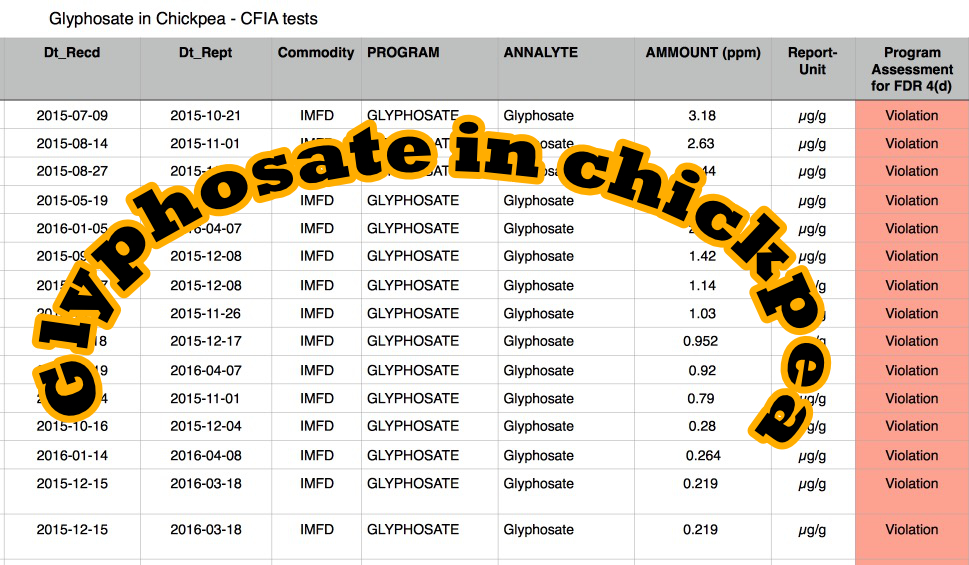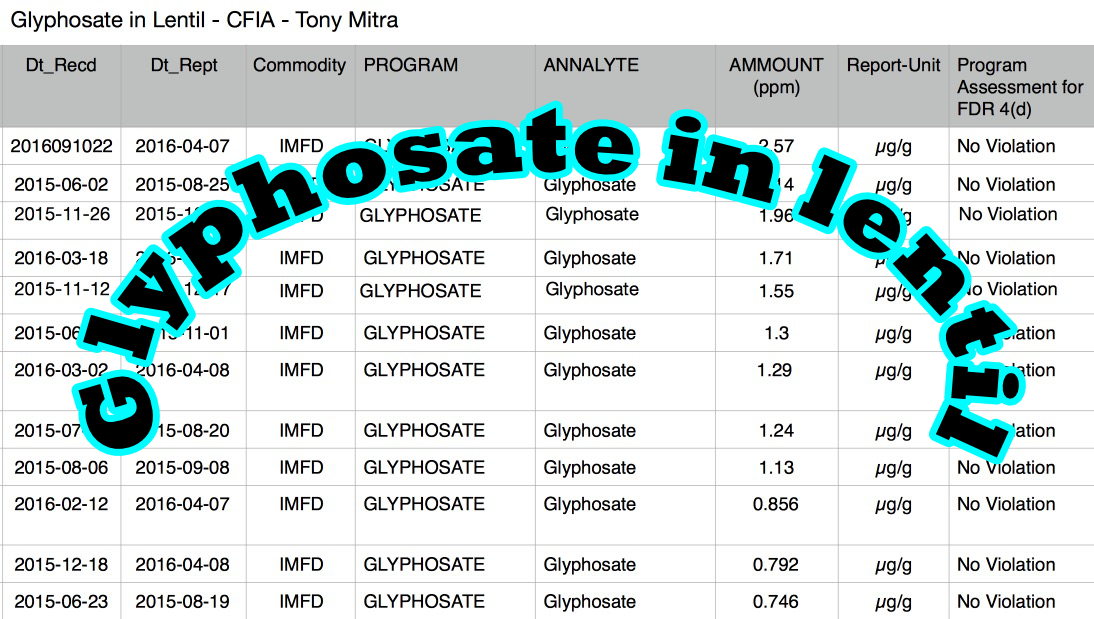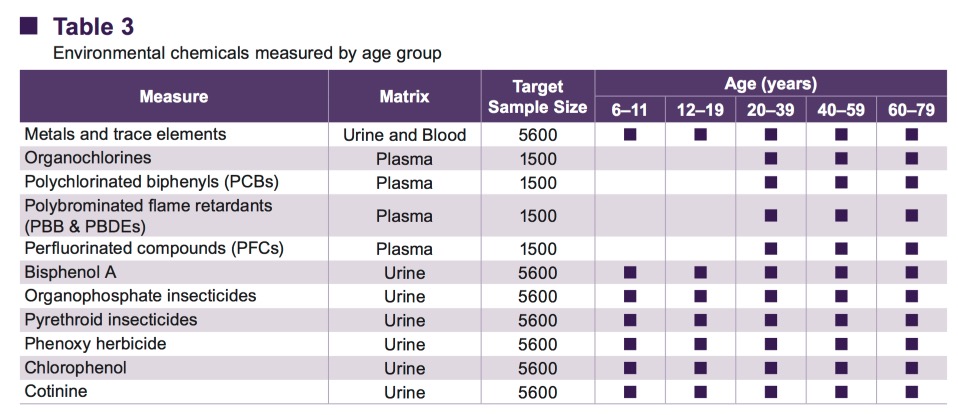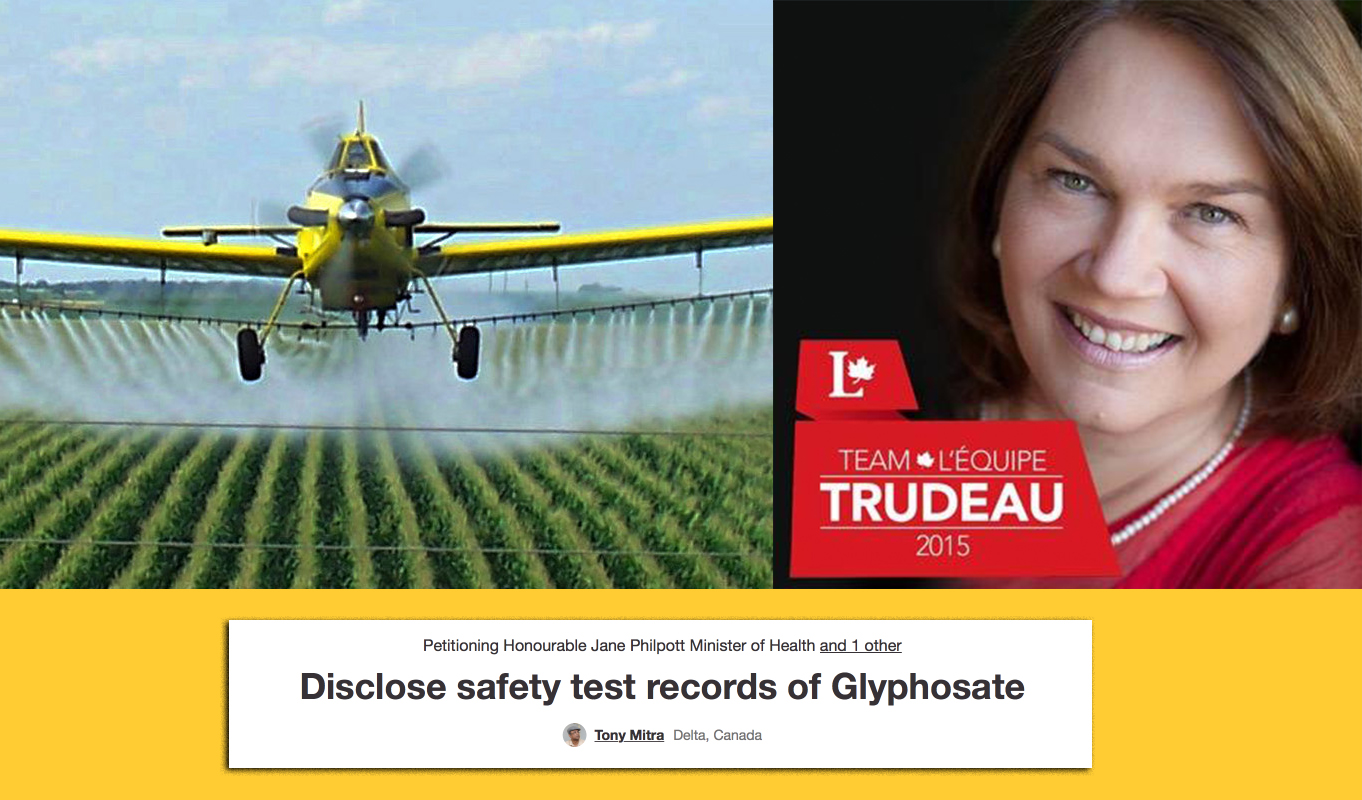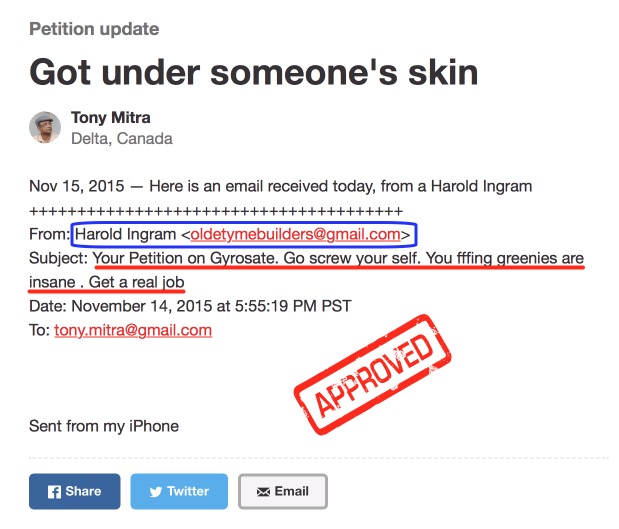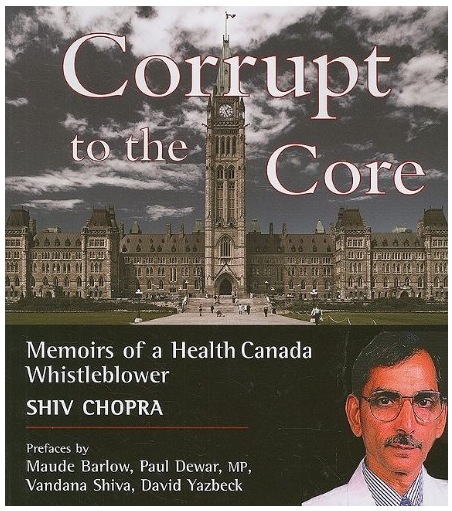Full set of test results from CFIA on glyphosate in chickpea, lentils and wheat bran, as well as the worst readings for any food groups, as received by self in December 2016, are placed here for reference.
Click on the images to go to the pdf file, which are free for download.
The lentil part is not too clear here since a lot of the processed food samples contained lentil but were described not as lentils but differently, such as this or that meal and snack etc. Those are not included in this list, which is purely what are described as lentils and lentil products by CFIA.
I personally believe that, as long as the Government hides safety test records and raw data involving tests on target animals under exposure to glyphosate and compared with identical animals not exposed, and their health parameters compared through the life span of the animals, its safety is unproven and therefore the people have a right to consider any level of glyphosate in food to be dangerous. The same applies to any and all safe limits (MRL) based on glyphosate.
Therefore, any glyphosate found in any food is essentially a violation of safety and aught to be removed from the stores.
I personally am not interested in discussing science behind either GMO or glyphosate, till such time the Government releases all safety test data on glyphosate for a start, and stop resorting to third party opinions on glyphosate safety. The Canadian government, just as the US and every other government, has been hiding these for over a generation now.
According to my understanding of the law, it is illegal to approve a product while hiding its safety record.
And lastly, here is a list of the worst samples as tested by CFIA where the readings showed presence of glyphosate above 1 ppm (1,000 ppb) and goes up to 12.5 ppm (12500 ppb).
Click on the image to go to the pdf file that can be downloaded and blown up.
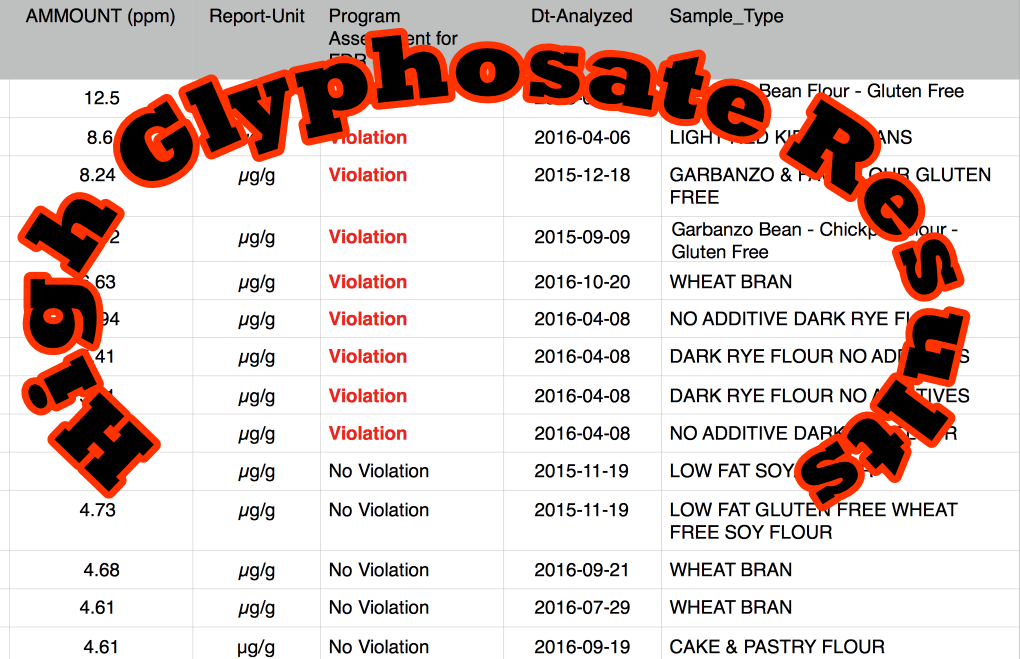

The whole data from CFIA, totalling near 8,000 test records on foods collected in Canada and originating from 68 countries, with most samples from Canada and the US, have been analyzed, categorized, tabled, tabulated and charts made of, in detailed description in the book Poison Foods of North America. USA and Canada produces the most toxic of all foods on the planet when it comes to glyphosate contamination.
The book also gives details of other biocides found in foods b the Canadian Food Inspection Agency, involving poisons such as Atrazine, Chlorpyrifos, 2,4-D, Chlorothalonil etc, which are also shown in the same book.
The book contains about 400 such charts and tables. A few of those are shown here.

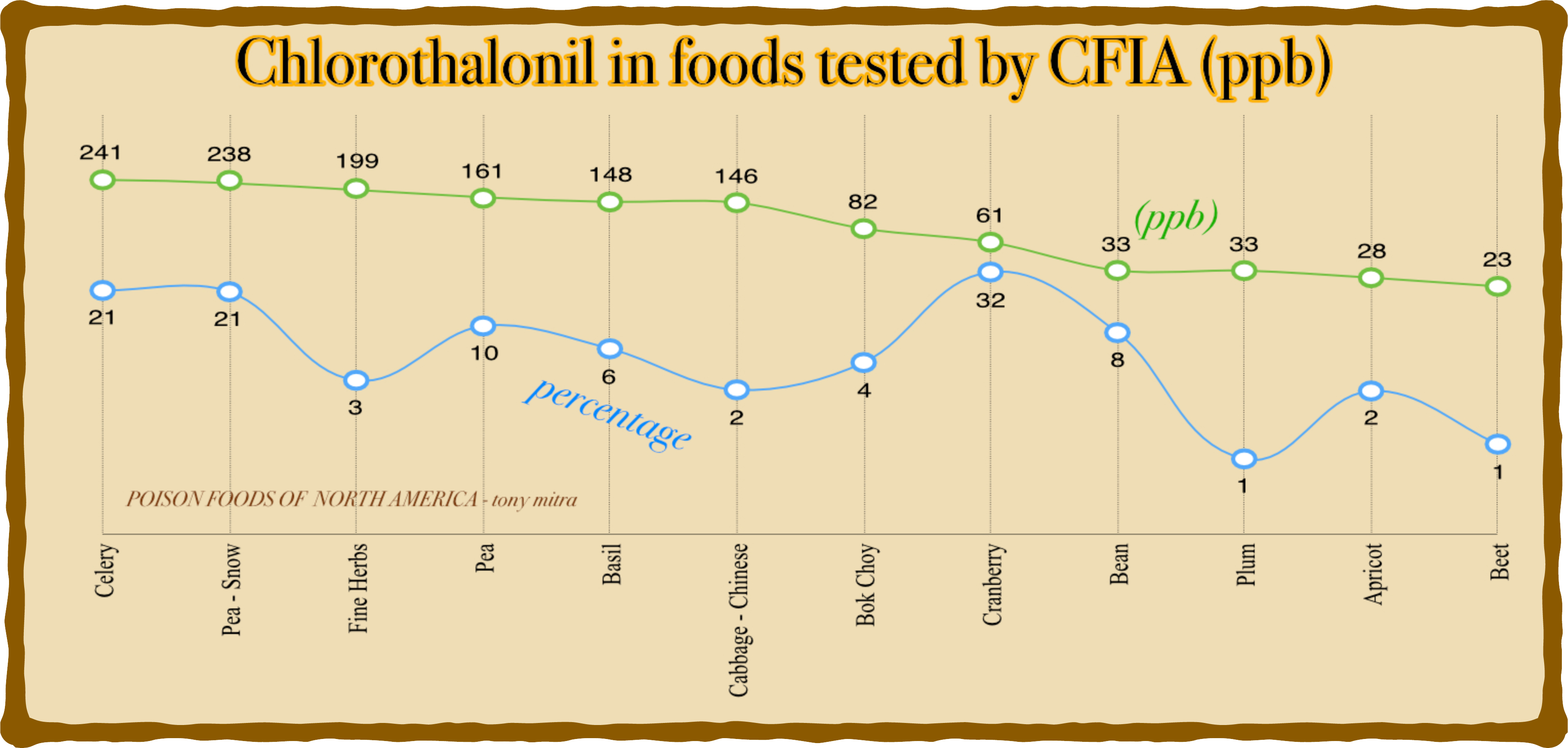 MIT scientist Stephanie Seneff wrote the following review of the book on Amazon:
MIT scientist Stephanie Seneff wrote the following review of the book on Amazon:
This is a first of a kind book with detailed information about glyphosate contamination levels in foods from around the world, based on more than 7,000 records that Tony Mitra obtained from the Canadian government.
It is good to see that Canada is actually testing foods for glyphosate, unlike the US, who only tested soy and only in a single year, and found it in over 90% of the samples tested. The US only did this one test at the insistence of Anthony Samsel, a researcher/chemist who is extremely concerned about the toxicity of glyphosate, and who contributes material to this book.
 Tony has painstakingly analyzed the data he received from the Canadian government, and packaged it up so that you as a reader can more easily obtain valuable information to help you figure out how to shop wisely so as to avoid chronic glyphosate poisoning as much as possible.
Tony has painstakingly analyzed the data he received from the Canadian government, and packaged it up so that you as a reader can more easily obtain valuable information to help you figure out how to shop wisely so as to avoid chronic glyphosate poisoning as much as possible.
There are some big surprises in the book such as extremely high levels of glyphosate in Canadian legumes, such as lentils and chick peas, due to the widespread practice of spraying the crop right before harvest as a desiccant.
If you believe the governments when they say that glyphosate (the active ingredient in the pervasive herbicide, Roundup) is nontoxic to humans, then you will not need to read this book. But if, like me, you are passionate about avoiding glyphosate, this book is invaluable! It may help protect you from serious health care issues down the road.
Stephanie Seneff
Comments and suggestions welcome.
Tony Mitra

